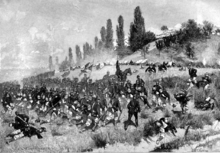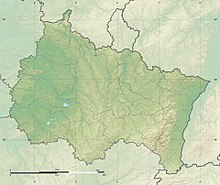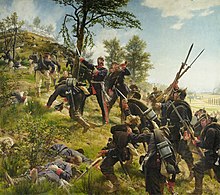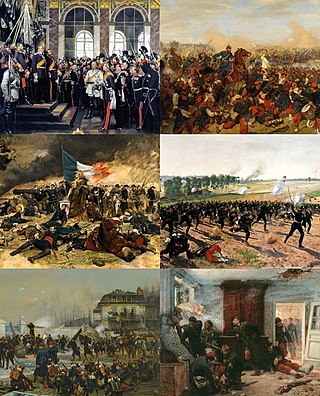
The Franco-Prussian War or Franco-German War, often referred to in France as the War of 1870, was a conflict between the Second French Empire and the North German Confederation led by the Kingdom of Prussia. Lasting from 19 July 1870 to 28 January 1871, the conflict was caused primarily by France's determination to reassert its dominant position in continental Europe, which appeared in question following the decisive Prussian victory over Austria in 1866. According to some historians, Prussian chancellor Otto von Bismarck deliberately provoked the French into declaring war on Prussia in order to induce four independent southern German states—Baden, Württemberg, Bavaria and Hesse-Darmstadt—to join the North German Confederation; other historians contend that Bismarck exploited the circumstances as they unfolded. All agree that Bismarck recognized the potential for new German alliances, given the situation as a whole.

Hermann Karl Bruno von François was a German General der Infanterie during World War I, and is best known for his key role in several German victories on the Eastern Front in 1914.
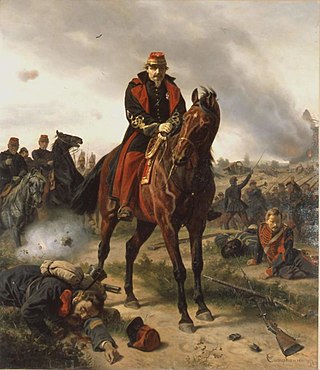
The Battle of Sedan was fought during the Franco-Prussian War from 1 to 2 September 1870. Resulting in the capture of Emperor Napoleon III and over a hundred thousand troops, it effectively decided the war in favour of Prussia and its allies, though fighting continued under a new French government.
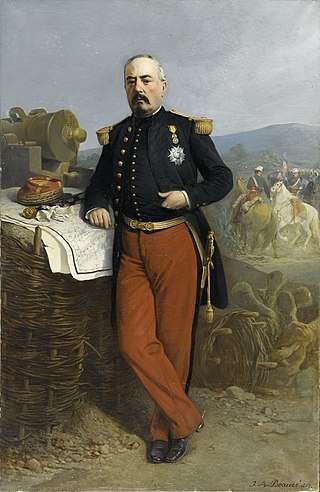
François Achille Bazaine was an officer of the French army. Rising from the ranks, during four decades of distinguished service under Louis-Philippe and then Napoleon III, he held every rank in the army from fusilier to Marshal of France, the latter in 1863.

Helmuth Karl Bernhard Graf von Moltke was a Prussian field marshal. The chief of staff of the Prussian Army for thirty years, he is regarded as the creator of a new, more modern method of directing armies in the field and one of the finest military minds of his generation. He commanded troops in Europe and the Middle East, in the Second Schleswig War, Austro-Prussian War and Franco-Prussian War. He is described as embodying "Prussian military organization and tactical genius". He was fascinated with railways and pioneered their military use. He is often referred to as Moltke the Elder to distinguish him from his nephew Helmuth von Moltke the Younger, who commanded the German army at the outbreak of the First World War. He is notably the earliest-born human to have been audio-recorded, being born in the last year of the 18th century (1800). He made 4 recordings, 2 of which are preserved to this day, that were recorded in October 1889.

Karl Friedrich von Steinmetz was a Prussian Generalfeldmarschall. He was born at Eisenach and joined the army of Prussia during the War of Liberation. Over the Seven Weeks' War he led the V Corps against Austria and became known as the Lion of Nachod for his victories as the Battles of Nachod, Skalitz, and Schweinschädel. Steinmetz commanded one of three armies assembled on the Rhine for the Franco-Prussian War, during which he quarreled with Prince Friedrich Karl. After the war he retired.

The Battle of Gravelotte on 18 August 1870 was the largest battle of the Franco-Prussian War. Named after Gravelotte, a village in Lorraine, it was fought about 6 miles (9.7 km) west of Metz, where on the previous day, having intercepted the French army's retreat to the west at the Battle of Mars-la-Tour, the Prussians were now closing in to complete the destruction of the French forces.

The siege of Metz was a battle fought during the Franco-Prussian War from August 19 to October 27, 1870 and ended in a decisive allied German victory.

The Battle of Wissembourg or Battle of Weissenburg, the first of the Franco-Prussian War, was joined when three German army corps surprised the small French garrison at Wissembourg on 4 August 1870. The defenders, greatly outnumbered, fought stubbornly "especially considering they were surprised and greatly outnumbered, that the French sustained their old renown as fighting men and that the first defeat, although severe, reflected no discredit on the soldiers of the 1st Corps." The fall of Wissembourg allowed the Prussian army to move into France and compelled Marshal Patrice MacMahon to give battle, and suffer defeat, at the Battle of Wörth on 6 August.

The Battle of Mars-la-Tour was fought on 16 August 1870, during the Franco-Prussian War, near the village of Mars-La-Tour in northeast France. One Prussian corps, reinforced by two more later in the day, encountered the entire French Army of the Rhine in a meeting engagement and, following the course of battle, the Army of the Rhine retreated toward the fortress of Metz.

The Battle of Gumbinnen, initiated by forces of the German Empire on 20 August 1914, was a German offensive on the Eastern Front during the First World War. Because of the hastiness of the German attack, the Russian Army emerged victorious.
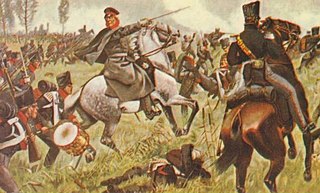
The Battle of Wartenburg took place on 3 October 1813 between the French IV Corps commanded by General Henri Gatien Bertrand and the Allied Army of Silesia, principally the I Corps of General Ludwig von Yorck. The battle allowed the Army of Silesia to cross the Elbe, ultimately leading to the Battle of Leipzig.
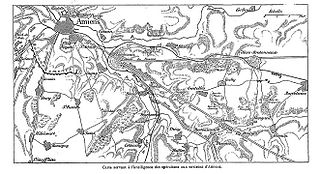
The Battle of Amiens, also known as the Battle of Villers-Bretonneux, was fought on 27 November 1870 between French and Prussian forces during the Franco-Prussian War (1870–1871). It ended in a Prussian victory, forcing the French to retreat and allowing the Prussians to capture Amiens, France.

Henri Jules Bataille was a nineteenth-century French soldier. He rose to général de division of infantry, saw colonial service in Algeria, and fought in the Second Italian War of Independence and the Franco-Prussian War. He was awarded the Grand Cross of the Legion of Honour.

The Army of Châlons was a French military formation that fought during the Franco-Prussian War of 1870. Formed in the camp of Châlons on August 17, 1870, from elements of the Army of the Rhine which the formation was issued from, the Army of Châlons was engaged in combats of Beaumont and Sedan while disappearing during the capitulation of September 2, 1870.

The Battle of Saarbrücken was the first major engagement between the French Empire and the Kingdom of Prussia during the Franco-Prussian War. The battle took place on 2 August 1870, around the city of Saarbrücken.
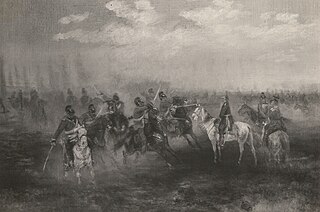
Battle of Buzancy was a battle of the Franco-Prussian War which took place on 27 August 1870 in Buzancy, France between the French Empire and the combined German forces of Prussia and Saxony. The midfield force of the 24th Brigade of a division Saxon cavalry of the Maas Army of the Prussian army won a victory over the Cavalry Regiment. 12th Chasseur light infantry of the V Army of the French Empire under the command of General Pierre Louis Charles de Failly. Taken by surprise in this cavalry battle, the French formation was torn apart and almost completely annihilated. On the Prussian - German side, the captains of the two cavalry squadrons involved in the battle were wounded. The defeat at Buzancy forced the retreat of the French cavalry squadrons, and the Battle of Buzancy is arguably the most characteristic cavalry and artillery clash of the war.
The Battle of Nouart was fought on 29 August 1870 at the village of Nouart. Part of the Franco-Prussian War of 1870–1871, the battle saw Prince George's 46th Infantry Brigade of the XII Royal Saxony Corps defeat Pierre Louis Charles de Failly's V Corps of the French Empire.
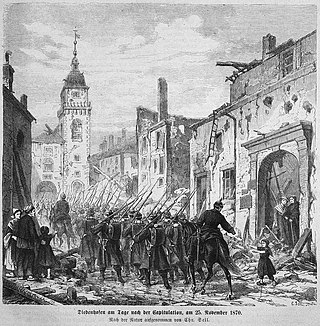
The siege of Thionville was a battle of the Franco-Prussian War which occurred in Thionville of the Moselle from November 13 to November 24, 1870. The small French garrison repulsed an attempted attack on August 14. It was subjected to a blockade and then besieged from November 13. After the capitulation of Metz, on October 28, 1870, the Prussians move part of their powerful artillery to Thionville. Bombed from November 22, the square surrendered on November 24. The capture of Thionville and that of Montmédy a month later gave the Germans control of the railroad to the Picardy front.
The Second Army was a formation of the Prussian Army during the Austro-Prussian War. Being a wartime formation, afterwards the field army was demobilized.
